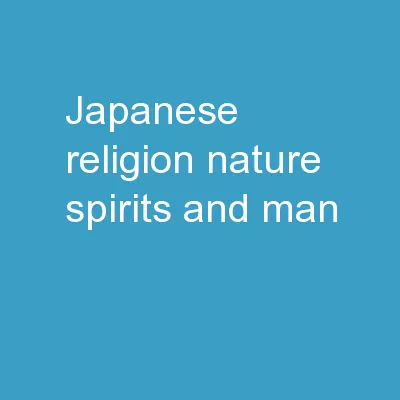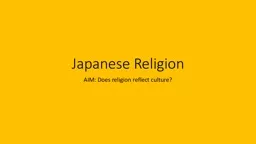PPT-Japanese Religion Nature, Spirits and Man—
Author : danika-pritchard | Published Date : 2019-02-08
Shinto and Buddhism What religions to people claim to follow What is Shinto Native religion of Japan Kami or spirits reside in nature and in people Nature is sacred
Presentation Embed Code
Download Presentation
Download Presentation The PPT/PDF document "Japanese Religion Nature, Spirits and Ma..." is the property of its rightful owner. Permission is granted to download and print the materials on this website for personal, non-commercial use only, and to display it on your personal computer provided you do not modify the materials and that you retain all copyright notices contained in the materials. By downloading content from our website, you accept the terms of this agreement.
Japanese Religion Nature, Spirits and Man—: Transcript
Download Rules Of Document
"Japanese Religion Nature, Spirits and Man—"The content belongs to its owner. You may download and print it for personal use, without modification, and keep all copyright notices. By downloading, you agree to these terms.
Related Documents














